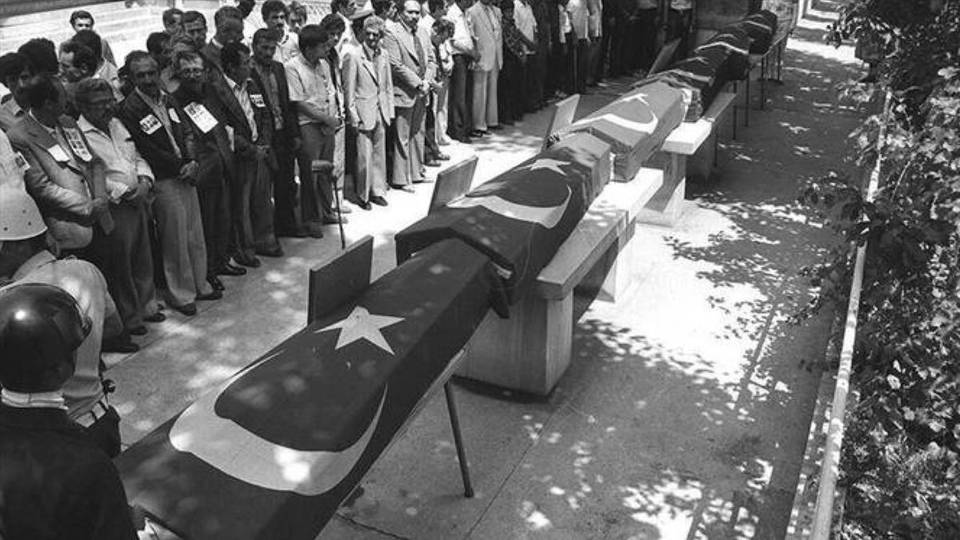Sport
Dollar
38,2552
0.34 %Euro
43,8333
0.15 %Gram Gold
4.076,2000
0.31 %Quarter Gold
6.772,5700
0.78 %Silver
39,9100
0.36 %A closer look at how genocidal assertions are unfounded and instead form part of anti-Türkiye propaganda campaigns.

By Ihsan Faruk Kilavuz
Despite Türkiye's persistent refutation, supported by impartial historians worldwide, and its open invitation to examine archival records from both parties, allegations about the so-called Armenian genocide have frequently been used as a means of political pressure against Türkiye. Driven mainly by powerful Armenian interest groups in North America and Europe, the Armenian narrative sidesteps presenting substantiating material. Instead, it leans on claims and political rhetoric that stand in isolation from historical circumstances and lack legal grounds.
The origins
In the late 19th century, amidst global nationalist fervour, Armenian groups became part of destabilisation attempts against the Ottoman Empire. With the onset of World War I, they formed militias and engaged in violent acts within the empire. Their alliance with the Russian army and participation in attacks against Muslim-Turkish communities in Eastern Anatolia, prompted the Ottoman government to enact the "Relocation and Resettlement Law" on May 27, 1915. This law required the forced relocation of Armenians within the empire to ensure the safety of its territories and people.
Armenians have since depicted this relocation as a deliberate effort to eliminate them, a narrative aimed at attracting international support. Leveraging backing from Western countries, Armenian groups have continuously labelled the 1915 events as "genocide" and used falsehoods to pressure Türkiye for various political and financial gains.
No legal substantiation
Accusations of genocide carry grave implications, denoting a severe international offence with considerable legal consequences. Therefore, debates on genocide require robust legal substantiation instead of politically motivated claims.
The evaluation of the events of 1915 in the context of international law, particularly within the framework of the 1948 UN Convention on the Prevention and Punishment of the Crime of Genocide (Genocide Convention), holds critical importance in terms of debunking historical falsehoods.
Genocide is described in the 1948 Genocide Convention as a universally condemned crime targeting national, ethnic, racial, or religious groups with the intent to destroy them, either wholly or partially, through acts such as killing, causing severe harm, imposing dire living conditions, preventing births, or forcibly transferring children.
No genocidal intent
To constitute genocide, there must be a proven intent on the part of perpetrators to physically destroy a national, ethnic, racial, or religious group. In other words, the simple intention to disperse a group is not enough for the occurrence of the crime of genocide. What is needed to prove the existence of such a crime is the specific intent to commit it, or dolus specialis.
If one analyses the 1915 events within the framework of the Genocide Convention, the "intent to destroy" is conspicuously absent.
Following the enactment of the "Relocation and Resettlement Law", different regulations and measures were taken to ensure the relocation of Armenians without harm. The Ottoman government exerted maximum effort to ensure the safety of civilians and their belongings, facilitating their access to new settlements.
There was no semblance of anti-Armenian sentiment within the Ottoman state apparatus akin to the anti-Semitism prevalent in Nazi Germany. Armenian statesmen were employed in influential positions within the government for decades.
Moreover, the Armenian population was recognised as a "loyal nation (millet-i sadıka)" within the multi-ethnic Ottoman Empire.
Therefore, the relocation decision cannot be construed as an act of "exile" since the Ottoman government did not expel its Armenian citizens; rather, they were resettled within Ottoman territories, specifically the region of Syria (which was then an Ottoman territory), to mitigate the adverse effects resulting from the First World War.
The routes and means of transport for the relocation were meticulously planned, and authorities deployed military escorts to accompany the relocated Armenians throughout their journey to ensure their safety despite the need for these units on other fronts threatened by war.
If administrators were found guilty of negligence or corruption during the relocation process, they were subject to investigation and prosecution. Consequently, over a thousand officials were tried in military courts, and some were sentenced to death for their offences.
Had the government harboured an intention to "systematically annihilate" Armenians, it would not have undertaken such measures or punished its officials for any misconduct.
Another proof of the absence of genocidal intent within the Ottoman administration is the fact that meticulous records were maintained to consider the Armenians that were relocated. In addition, towards the end of the war, the government issued a decree allowing relocated Armenians to return if they wished, and a decision was made to return immovable property belonging to Armenian communities protected during the relocation process through a special commission.
Anti-Türkiye lobbies
There is also another legal point to consider. The Relocation and Resettlement Law and the events of 1915 are developments related to the internal affairs of the late Ottoman state. Therefore, according to the principle of "succession of states" in international law, it is legally invalid to associate these events with the empire's successor states, including Türkiye.
Furthermore, the Treaty of Lausanne, dated July 24, 1923, legally concluded the issues concerning the Armenian matter. Hence, Türkiye bears no legal responsibility beyond the provisions of this treaty regarding the decisions and actions of the Ottoman era.
Finally, as a general legal principle, the retroactive application of crimes committed, and the penalties imposed is not permissible. In this context, it is legally impossible to apply the 1948 Genocide Convention to events predating its entry into force in 1951. Consequently, it is legally impossible to hold Türkiye responsible in the present day or fulfil the demands of the Armenian side.
In conclusion, the genocidal assertions are removed from the truth and lack legal grounds. In fact, they are part of propaganda campaigns aiming to leverage these claims to advance territorial and reparatory demands against Ankara. These allegations are funded by anti-Turkish lobbies and sometimes backed by various governments and legislative bodies as means to pressure and blackmail Turkish authorities.
The author, Ihsan Faruk Kilavuz is a TRT World Research Center researcher specialising in international human rights law and armed conflicts.
Disclaimer: The views expressed by the author do not necessarily reflect the opinions, viewpoints and editorial policies of TRT Afrika.
➤Click here to follow our WhatsApp channel for more stories.
Comments
No comments Yet




















Comment